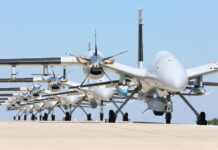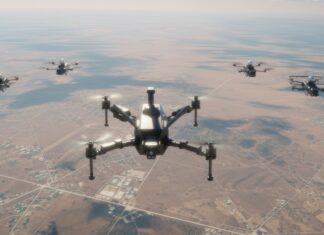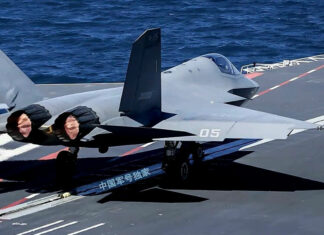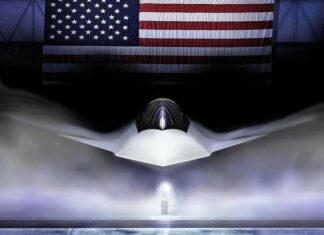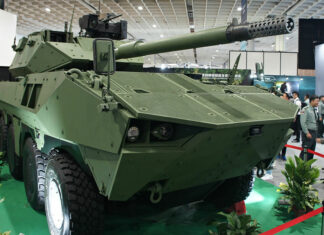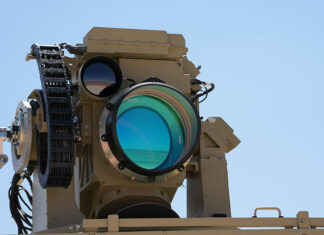Elisra’s Passive (EO) Missile Warning System (MWS) provides a key element in advanced self protection systems for fighter aircraft, helicopters, transports and commercial aircraft. can also track a threat throughout the engagement. By using infrared imagery and signal processing, PAWS-2 detects and tracks incoming missile’s hot plume as it appears within a protective sphere surrounding the aircraft. The system discriminates between threatening and non-threatening missiles, by evaluating the missile’s trajectories. When a threat is detected, PAWS-2 alerts the aircrew and automatically activates countermeasures (flares, chaff, decoys and DIRCM). PAWS can track the threat throughout the engagement. After detecting a missile threat, the system filters the background clutter by a applying several processing techniques, including narrow spectral window, optimized for real-time signal processing, and by applying an adaptive threshold. Threat assessment is determined by a rapid target algorithm, which tracks each threat frame-by-frame, and analyzes target maneuverability, relative position, inertial data and angular velocity and intensity. When it detects a threatening missile, PAWS-2 automatically alerts the pilot with a warning signal and activates countermeasures while also providing accurate information to Directional Infra-Red Counter-Measures (DIRCM). PAWS-2 also provides threat information to other EW systems as part of an EW suite, as well as to avionics subsystems. It can also operate as a stand-alone system. Designed and developed specifically to protect fighters from SAMs and MANPADs, PAWS-2 systems are designed for fighter aircraft and has already deployed with Israel’s F-16Is. PAWS-1 systems are already deployed on IDF combat and assault helicopters.
Skunk Works and XTEND Simplify Multi-Drone Command
Tamir Eshel - 0
Lockheed Martin Skunk Works® and XTEND have achieved a major milestone in JADC2 by integrating the XOS operating system with the MDCX™ autonomy platform. This technical breakthrough enables a single operator to simultaneously command multiple drone classes, eliminating the friction of mission handoffs. From "marsupial" drone deployments to operating in GPS-denied environments, explore how this collaboration is abbreviating the data-to-decision timeline and redefining autonomous mission execution.
From Ukraine to Taiwan: The Global Race to Dominate the New Defense Tech Frontier
As traditional defense primes face mounting competition from agile “neoprimes” such as Anduril, Palantir and Helsing, the balance of innovation is shifting toward software-defined warfare and scalable, dual-use technologies, while global industry consolidation—marked by Boeing’s integration of Spirit AeroSystems and other strategic mergers—signals an intensified race to secure control over the defense technology value chain. Our Defense-Tech weekly report highlights these trends.
Europe’s “Drone Wall”
Tamir Eshel - 0
In early October 2025, a coordinated wave of unmanned aerial system (UAS) incursions—widely attributed to Russia—targeted critical infrastructure across at least ten European nations. The unprecedented campaign exposed the fragility of Europe’s air defenses...
Weekly Defense Update & Global Security Assessment
Tamir Eshel - 0
Executive Summary
The past week (September 18-25, 2025) represents an inflection point where strategic defense concepts have transitioned from doctrine to tangible reality. An analysis of global events reveals four primary, interconnected trends shaping an...
U.S. Air and Space Forces Push Next-Gen Programs at the AS&C 2025 Conference and...
Tamir Eshel - 0
At the 2025 Air, Space & Cyber Conference, U.S. Air Force and Space Force leaders unveiled major updates on next-generation fighters, bombers, unmanned systems, and space initiatives, highlighting both rapid innovation and critical readiness challenges as the services race to outpace global competitors. A short version is available here, with a more detailed version for subscribers.
TADTE 2025: Reflecting Taiwan’s Strategic Themes
Tamir Eshel - 0
The Taipei Aerospace & Defense Technology Exhibition (TADTE) 2025 crystallized around four dominant strategic themes that collectively illustrate Taiwan's comprehensive approach to defense modernization amid escalating regional tensions. Based on a detailed report by Pleronix (available upon request). Includes a Podcast discussion on TADTE 2025's highlighting Taiwan's four strategic themes beyond the post's coverage.
Iron Beam 450 Completes Testing, Soon to Join With Operational Air Defense Units
Tamir Eshel - 0
Israel’s Iron Beam 450 high-power laser system has completed final testing, marking a major leap in air defense. Developed by Rafael, it offers precise, cost-effective interception of rockets, UAVs, and mortars, and is set for IDF deployment by 2025.

